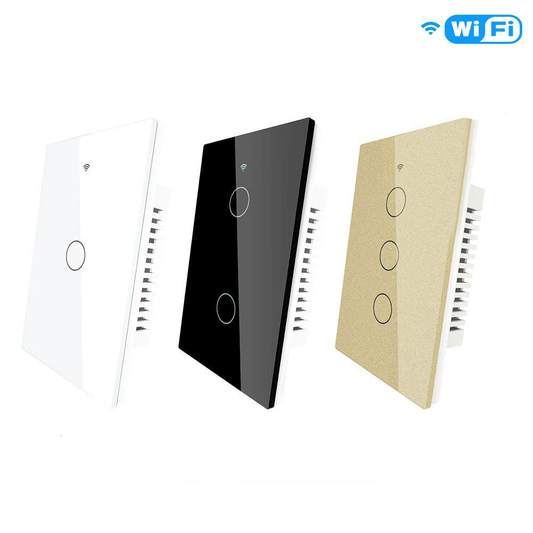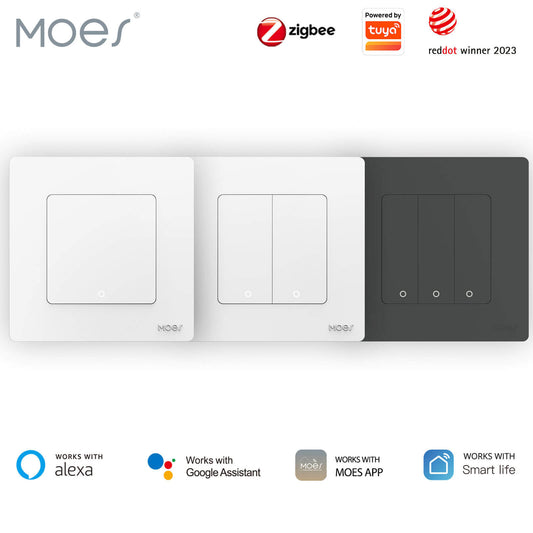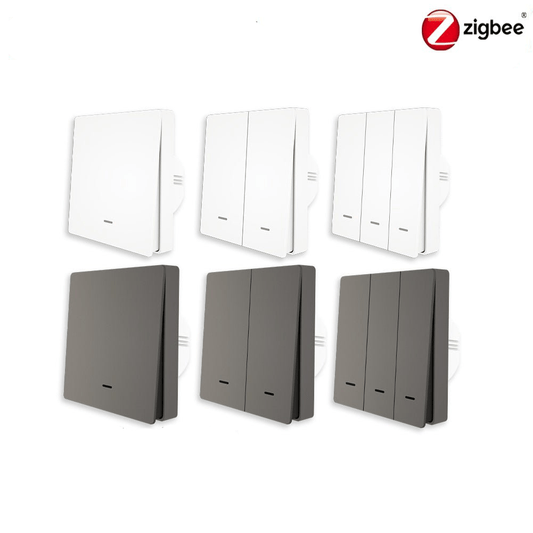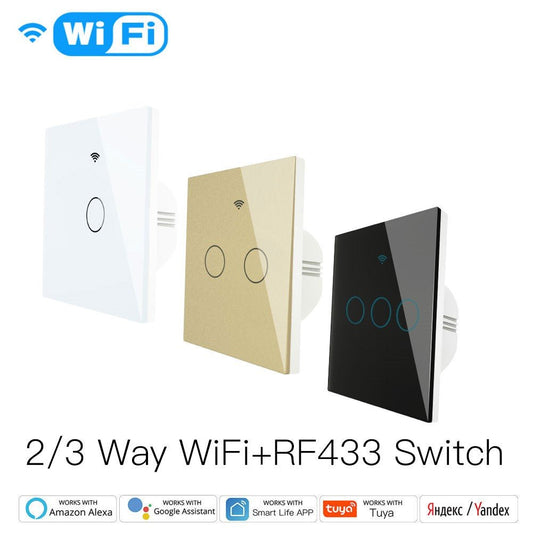Smart home technology is rapidly evolving, reshaping our way of life. Since the 19th century, we have been exploring uncharted territories, and today, smart homes have become an integral part of our daily routines. With the increasing competition in wireless technology, systems like WiFi and Zigbee are gradually becoming mainstream in the consumer technology market.
As you begin to envision your own smart home, this information will be a crucial factor in your decision-making process. If you are unfamiliar with the industry terminology used in smart home devices, don't worry, we will explain everything to you. Let's explore the differences between Zigbee and WiFi together, so you can make an informed decision and create the perfect smart home experience.

What is Zigbee Network Communication?
Zigbee is an open standard wireless technology designed specifically for low-power and low-data-rate applications. It is based on the 802.15.4 network standard and serves as an efficient alternative to Wi-Fi, primarily used in smart home devices ranging from security sensors to smart thermostats.
How does Zigbee Work?
Zigbee operates using a mesh network topology, ensuring that smart devices can communicate even without an internet connection. Each device forms part of a mesh structure, ensuring the reliability and robustness of the entire network. This decentralized and flexible structure ensures that even if some devices fail, the entire system remains unaffected.
Nodes include coordinators, routers, and end devices, all working together to facilitate data transmission and processing. Zigbee communicates in the 2.4GHz frequency band, making it suitable for battery-powered devices due to its low power consumption. Additionally, it provides multi-layered security mechanisms to safeguard the integrity of communication data.

Zigbee: Pros and Cons
| ☑ Pros | ☒ Cons |
|
|
What is A Wifi Protocol?
A WiFi protocol refers to a set of standards and rules that govern wireless communication over a WiFi network. These protocols define how devices communicate with each other and the network, ensuring compatibility and efficient data transmission. Common WiFi protocols include 802.11a, 802.11b, 802.11g, 802.11n, 802.11ac, and 802.11ax, each offering different speeds, frequencies, and features to meet diverse networking needs.

How Does WIFI Protocol Work?
When a device wants to connect to a WiFi network, it sends a connection request to the access point (router), which authenticates the device and assigns it an IP address. This process is governed by the WiFi protocol, which dictates the procedures for establishing and managing connections.
Once connected, devices can exchange data with each other or access the internet through the access point. The WiFi protocol defines how data packets are formatted, transmitted, and received between devices and the access point. It also includes error-checking mechanisms to ensure data integrity during transmission.
Security is a crucial aspect of WiFi protocols, with features such as encryption (e.g., WPA2, WPA3) implemented to protect data from unauthorized access or interception. Additionally, some WiFi protocols support Quality of Service (QoS) features to prioritize certain types of traffic, ensuring a smoother user experience for time-sensitive applications.
WIFI: Pros and Cons
| ☑ Pros | ☒ Cons |
|
|
WIFI vs. Zigbee: Key Differences
Frequency Bands
WiFi operates on both the 2.4GHz spectrum and the 5GHz frequency bands, with available spectrum varying by country. Similar to Bluetooth, Zigbee utilizes the 2.4GHz ISM band, specifically utilizing 16 channels ranging from 2405MHz to 2480MHz.
Data Rates
The latest WiFi6 standard, 802.11ax, offers significantly faster maximum data rates of up to 9.6Gbps. In contrast, Zigbee's maximum data rate tops out at 250kbps. However, Zigbee distinguishes itself with optimized low power consumption.
Range
WiFi networks extend their range to approximately 50m indoors and 100m outdoors for 2.4GHz networks. Zigbee provides coverage ranging from 10-100m for smart home and sensor networks. Maximum range is influenced by factors such as environment, power output, and antenna gain.
Power Consumption
Zigbee prioritizes low power consumption, making it ideal for battery-powered devices. Energy efficiency is a key focus for Bluetooth Low Energy (BLE) as well. Zigbee utilizes sleeping nodes to conserve power within mesh networks. While WiFi consumes more power for high bandwidth, it has improved for IoT applications.
Network Topology
WiFi networks typically adopt a point-to-hub topology, where devices connect to a central access point. Ad-hoc networks are also feasible, enabling direct peer-to-peer connections. Zigbee supports mesh, star, and tree network topologies. Mesh networks offer flexible routing, while star networks feature a central coordinator.
Cost
WiFi hardware costs are moderate, with chips and access points being more expensive compared to Bluetooth radios. Operating costs are higher due to increased power consumption. Zigbee aims for cost-effective, simple hardware, making it cheaper than WiFi. Operating costs are also lower due to optimized low power operation.
Overall, both Zigbee and WIFI have their advantages and disadvantages in different aspects. Which protocol you choose depends on your specific needs and budget.
| WiFi | Zigbee | |
| Specifications authority | IEEE Standards Association | Zigbee Alliance |
| Standard | 802.11 | 802.15.4 |
| Frequency band | 2.4 GHz and 5GHz | 2.4 GHz, 850 – 930 MHz |
| Data rate | 10-100+ Mbps | 20-250 Kbps |
| Transmission range | Up to 100m | Up to 100m |
| Power consumption | High | Low |
| Network topology | Point to hub, ad hoc | Mesh, star, tree, ad hoc |
| Security | Authentication service set ID (SSID) | 128 bit AES and application layer user defined |
| Complexity | Complex | Simple |
| Cost | Low | High |
| Application | Wireless local area network connection, broadband Internet access | Home automation and control, industrial monitoring sensor network |
Which Devices are Best Suited for Zigbee and Z-Wave?
For smart home devices like lights, locks, and appliances needing local data transmission without high bandwidth demands, Zigbee's mesh networking and low power consumption render it an optimal choice. With a range of up to 100m, Zigbee adequately covers an average-sized home.
WiFi isn't suitable for compact, battery-powered IoT devices due to its higher power requirements. However, for IoT applications necessitating substantial data transmission over a local wireless network, WiFi offers the fast data rates essential for video, voice, and robust networking.
In essence, Zigbee excels in home and industrial automation, while WiFi proves most effective for high-throughput local IoT data networking. Tailoring the choice of protocol and IoT manufacturers to specific connectivity needs and device constraints is crucial.
MOES smart switches, door locks, cameras, and sensors are all compatible with Zigbee. Regardless of which protocol you choose, MOES products can add more convenience and intelligence to your smart home system.
Therefore, whether you lean towards Zigbee or WIFI, MOES can provide you with suitable solutions. If you want to learn more about MOES products and how they are compatible with Zigbee and WIFI, please visit our purchase page.







